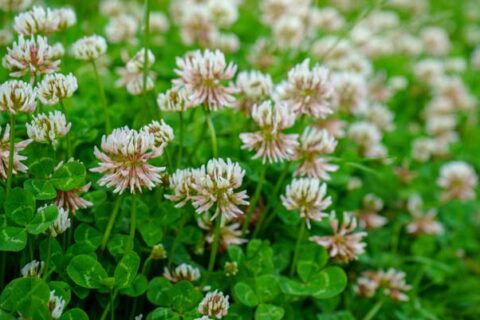Top 3 questions about crabgrass in your lawn

Crabgrass is an aggressive, summer annual that makes thousands—if not millions of lawns—look unsightly. To help you better manage and limit the growth of this weedy-grass, we’ve compiled and listed here three of the most common questions people ask
Why is crabgrass so difficult to get rid of?
Crabgrass is an annual weed that outcompetes cool-season grasses, such as Kentucky blue, rye, and fescue. Crabgrass seeds begin to germinate when soil temperatures reach 55 degrees or above for roughly five consecutive days. A single crabgrass plant is capable of producing 150,000 seeds during its lifecycle.
Crabgrass is difficult to manage for multiple reasons:
- Its seed bank in the soil can be extensive, especially if the lawn has not been well-maintained.
- Seeds can stay viable in the soil for more than one season.
- It can secrete its own herbicide to suppress growth of other nearby plants.
- It can grow in almost any turf and landscape environment.
- It thrives in dry, sunny, hot climates when desirable, cool-season grasses typically go dormant or struggle.
- It can survive mowing under 2 inches. Desirable turf should be mowed between 3.5 and 4 inches year-round until the last cut.
- It can withstand stress caused by foot traffic or machinery. Most desirable grasses are much more fragile and less likely to recover if repeatedly pummeled.
2. Will my lawn get crabgrass this year?
Applying a crabgrass pre-emergent in the spring can help suppress crabgrass seeds from emerging. This “barrier” sits right below the soil’s surface. However, no pre-emergent product is 100 percent effective, especially on lawns that haven’t been regularly well-maintained. Crabgrass is most likely to germinate:
- In bare spots or in areas where turf is thin.
- In areas under constant sunlight, which are hotter.
- Near street strips or along driveways or sidewalks, where the soil is hot and dry.
- When the pre-emergent barrier breaks due to heavy rains.
- In spots killed by animal feces or urine.
- In saturated soil.
- When the lawn is mowed too short or watered incorrectly.
3. Along with pre-emergent, how else can we prevent crabgrass from germinating?
While post-emergent crabgrass control exists, it can be both difficult and expensive to apply. That’s why we suggest focusing on growing a thick, healthy lawn. How to do this:
- Mow regularly and at the right height.
- Water correctly – improper watering can decimate a lawn, leading to weed growth.
- Aerate every fall, but never thatch or aerate in the spring.
- Always seed large bare or thin areas of your turf the last week of summer to early to mid-fall. Spring seeding can make it challenging (if not impossible) to apply effective pre-emergent barrier.
- Patch up smaller areas that are thin or bare.
We service parts of Norfolk and Bristol County, Massachusetts. Towns include Foxborough, Mansfield, Wrentham, Walpole, Plainville, Franklin, Stoughton, Sharon, Canton, North Attleborough, Attleborough, Norfolk, Easton, Norton, and parts of Medfield, Norwood, Medway & Millis. Learn more about each of the services we provide.
Your trusted lawn care provider and lawn pest exterminator
We Service Areas of Norfolk and Bristol County, Massachusetts Including, Foxborough, Mansfield, Wrentham, Walpole, Plainville, Franklin, Norfolk, Sharon, North Attleborough, and Parts of Attleboro, Stoughton, Canton, Norwood, Norton and Medfield. Learn more about our Complete Lawn Care program.


